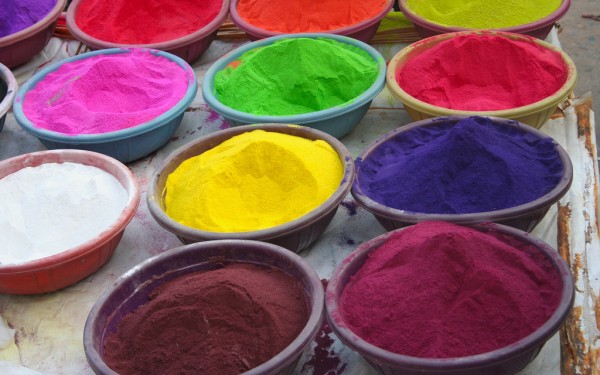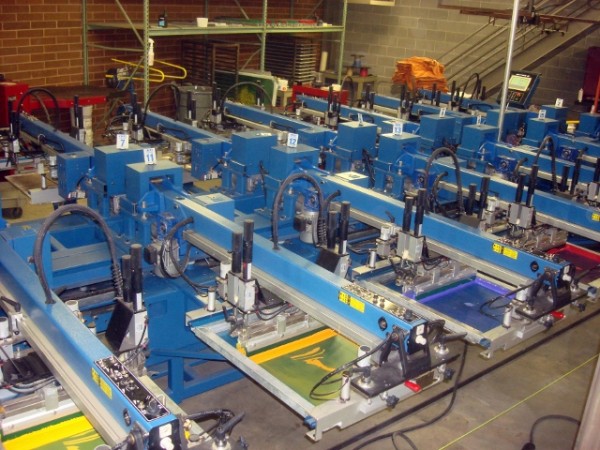Fans and customers of Del Sol’s color-changing apparel and accessories often times misunderstand the technological differences between light and heat-sensitive inks, dyes and products.
In casual conversation, people will simply refer to their color-changing shirt as a hypercolor shirt or a sun-sensitive shirt; “You know, like those shirts that changed color back in the late ‘80s early ‘90s?”
The reality is that Hypercolor or heat-sensitive shirts use thermochromic dyes and respond solely to heat, not light. While sun or light-sensitive shirts use photochromic dyes and respond solely to sunlight / ultraviolet (UV) light, not heat.
Thermochromic Dyes
To be more specific, thermochromic inks or dyes are temperature-sensitive compounds that temporarily change color with exposure to heat. They come in two forms, liquid crystals and leuco dyes. Leuco dyes are easier to work with and allow for a greater range of applications, including clothing.
Thermochromic inks first hit the mainstream in the 1970s, appearing in one of that era’s lasting icons – the mood ring, which used the wearer’s body heat as a sign of his or her emotional state. The most well-known line of clothing utilizing thermochromics was Hypercolor.
Hypercolor was a line of clothing, mainly T-shirts and shorts that changed color with heat. They were manufactured by Generra Sportswear Company of Seattle and marketed in the United States as Generra Hypercolor. They contained a thermochromic (temperature sensitive) pigment that changed between two colors – one when cold, one when warm.
The shirts were produced with several color change choices beginning in 1991. The effect could easily be permanently damaged, particularly when the clothing was washed in hotter than recommended water, ironed, bleached or tumble-dried.
For various reasons, the heat-sensitive, Hypercolor shirts didn’t last past the mid-1990s – mostly because of sporadic, spotty color change. It wasn’t very attractive seeing colors appear around arm pits or any other hot or cold spots on the body.
Photochromic Dyes
Photochromatic or Photochromism is described as a reversible change of color upon exposure to light. When you go indoors and out of the UV light, a different chemical reaction takes place. The absence of the UV radiation causes the molecules to return to their original shape, resulting in the loss of their light absorbing properties. In both directions, the entire process happens very rapidly.
Basically, photochromic color-changing dyes, inks and crystals reveal color upon irradiation by ultraviolet waves; i.e., sunlight. When a flower blooms, the result is the exposure of the inherent color of the flower.
Del Sol’s color-changing Spectrachrome® technology is similar in that an energy-shift occurs causing the color of the dye to become visible to the human eye. The shifting or “twisting” of the dye is referred to as a molecular excitation transition.
The dye does not actually “change” color; rather, it becomes visible to the human eye. Scientific research shows that some animals; e.g., certain species of bats, can actually see the color of a color-changing crystal in its inactive state.
Sunglasses or prescription eyeglasses, using photochromic technology, will darken when exposed to the sun. These types of lenses were first developed by Corning in the late 1960s and used by NASA in the 1970s-80s for its space helmets, and popularized by Transitions in the 1990s.
Because of the extreme popularity of the Transitions brand, these lenses are usually referred to as transition lenses. The correct term for these glasses is photochromic or photochromatic, which refers to the chemical reaction the lenses have to ultraviolet (UV) radiation.

Del Sol’s Spectrachrome® Color-Changing Technology
Our first involvement with color-changing dyes began between 1980 and 1994 and, at first, involved heat-sensitive, color-changing paint. It was the seedling in embryo, which would spawn the creation of what would later become Del Sol’s proprietary Spectrachrome® technology.
After initially working with this paint, we created the first shirt ever printed with a heat-sensitive, color-changing design.
Prior to this point, photochromic inks were rarely found on a T-shirt and, when they were, the design would feature only one, hardly noticeable photochromic color, mostly used as an accent color. After several years of continuous development, we rolled out a full palette of descent UV-sensitive colors.
We were the first company in the industry to offer full, rich, multi-color designs on T-shirts! The response, both from our existing customers and new customers could not have been better.
We were able to isolate the color-changing inks used in our prints and products to change colors when and where we wanted. Initially, we had planned to offer the photochromic products as a supplement to the existing line of thermochromic products. However, very quickly, sales of thermochromic products all but ceased.
At this point, we were determined to create more color variety and greater color intensity, so we began working with frontrunners in the photochromic ophthalmic market to develop our own photochromic dyes.
After countless tests and several generations of dyes, formulations, ink bases, and processes, we produced a full line of intensely colorful inks with little or no indoor color under our proprietary Spectrachrome® technology.
Del Sol’s Spectrachrome photochromic dyes are synthesized of organic materials. The color-changing molecules in these dyes/inks are typically invisible to the human eye until they are irradiated by ultraviolet light – mostly in the 320-to-400 nanometer range.
The peak wavelength, which is 365 nanometers, is commonly referred to as blacklight. Upon such irradiation, the dyes undergo a molecular excitation transition. Once the dye is irradiated, its energy shifts into the visible range of the spectrum. This reaction is reversed by the absence of ultraviolet light.
To learn more about Del Sol’s color-changing UV-sensitive products, visit DelSol.com.
Additional Sources
http://electronics.howstuffworks.com/gadgets/other-gadgets/thermochromic-ink.htm
Seeboth, Arno and Lötzsch, Detlef (2014) Thermochromic and Thermotropic Materials, Pan Stanford Publishing Pte.Ltd., Singapore, ISBN 9789814411035
Bamfield, Peter and Hutchings, Michael G. (2010). Chromic Phenomena: Technological Applications of Colour Chemistry. Royal Society of Chemistry. pp. 48–. ISBN 978-1-84755-868-8.
Seeboth, A.; Lötzsch, D.; Ruhmann, R.; Muehling, O. (2014). “Thermochromic Polymers – Function by Design”. Chemical Reviews 114 (5): 3037. doi:10.1021/cr400462e.
Hypercolor is hot again,” Los Angeles Times, 6 July 2008
“To Dye For — Hypercolor Clothes Heating Up Market For Maker Generra,” The Seattle Times, 24 April 1991
http://science.howstuffworks.com/innovation/science-questions/question412.htm


